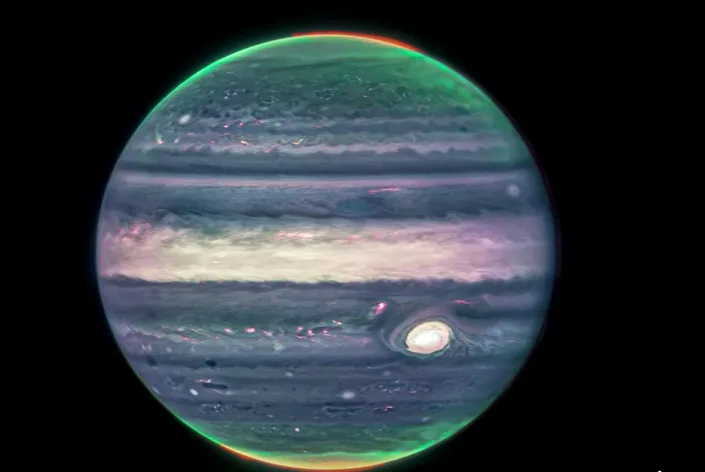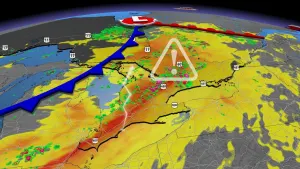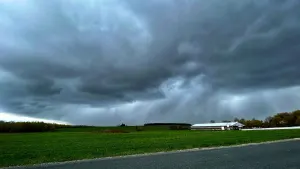
James Webb telescope reveals stunning new Jupiter views
(Reuters) - NASA has released new images of the planet Jupiter captured by the James Webb Space Telescope using the observatory’s Near-Infrared Camera (NIRCam), which has three specialized infrared filters that showcase details of the planet.
Webb’s new views will give scientists even more clues to Jupiter’s inner life, NASA said.
The images were created from a composite of several images from Webb and show auroras extending to high altitudes above both the northern and southern poles of Jupiter.
The Great Red Spot, a storm so big it could swallow Earth, appears white in these views, as do other clouds, because they are reflecting a lot of sunlight, according to NASA.
Also visible are Jupiter's faint rings, vastly fainter than the planet, and two tiny moons called Amalthea and Adrastea.
SEE ALSO: Webb's first images spark awe and wonder about the universe
The data gathered from James Webb will help space scientists study the dynamics and chemistry of Jupiter itself, its rings, and its satellite system.
Nearly two decades in the making and built under contract for NASA by aerospace giant Northrop Grumman Corp, the $9 billion infrared telescope was launched on Dec. 25, 2021. It reached its destination in solar orbit nearly 1 million miles from Earth a month later.
WATCH: Compare the clarity of James Webb telescope's images with Hubble's
Among the first images released in July was one showing a "deep field" photo of a distant galaxy cluster, SMACS 0723, revealing the most detailed glimpse of the early universe recorded to date.
One of the older galaxies appearing in the "background" of the photo - a composite of images of different wavelengths of light - dates back about 13.1 billion years. The Big Bang, the theoretical flashpoint that set the expansion of the known universe in motion, occurred some 13.8 billion years ago.









